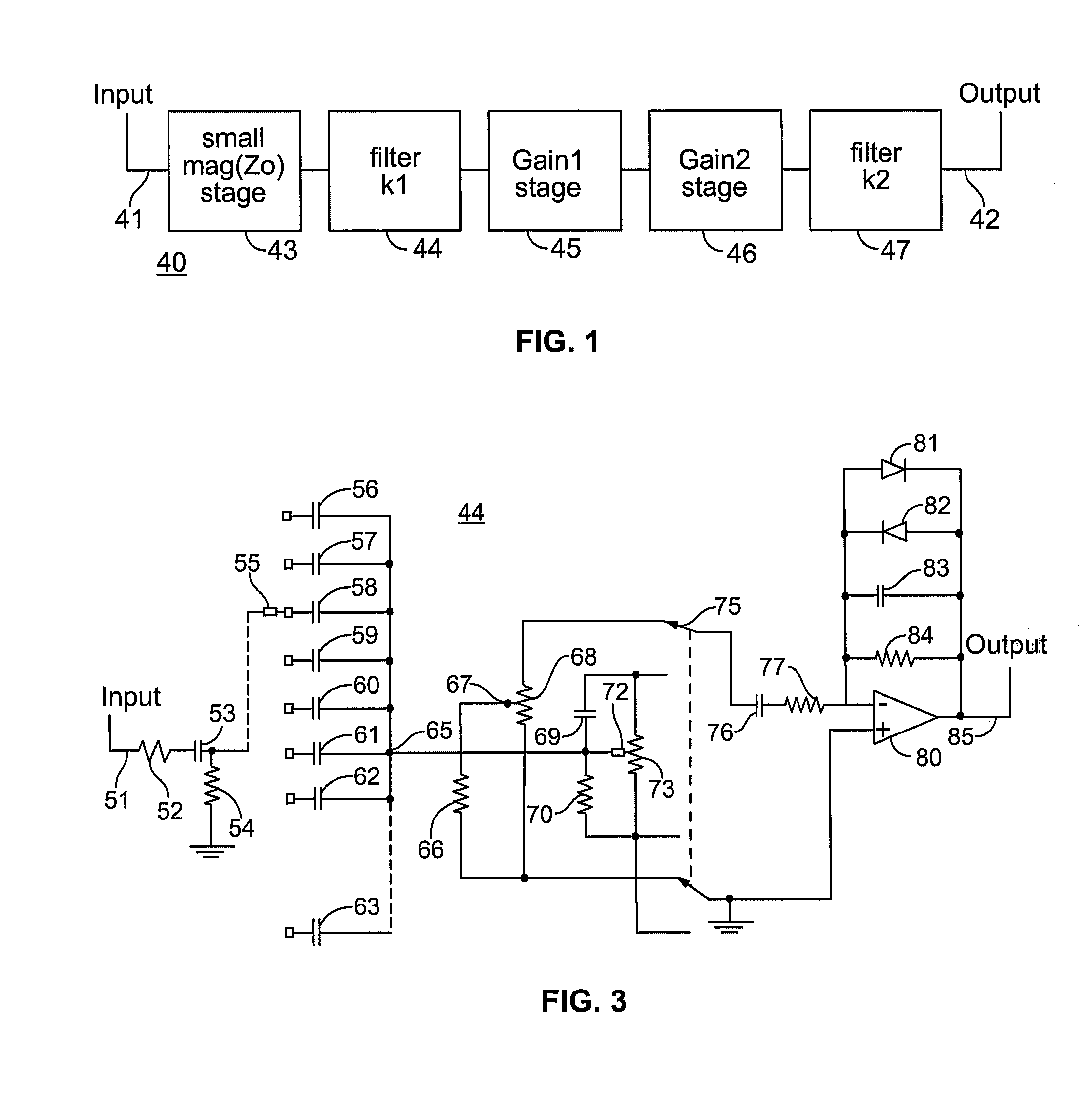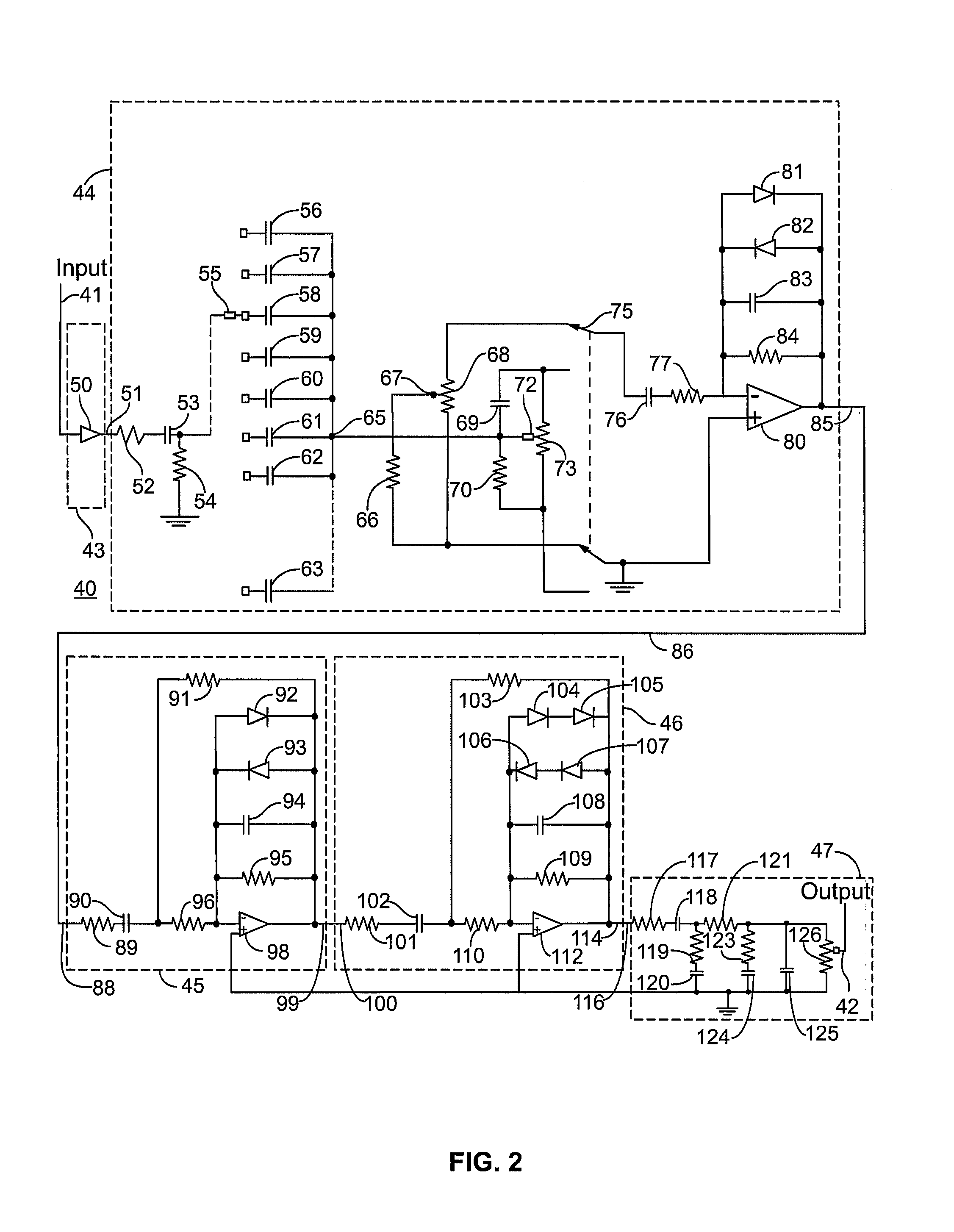Electronic Signal Processor
a signal processor and electronic technology, applied in the field of electronic signal processors, can solve the problems of increasing the amount of distortion present in the processor output, contributing to the distortion characteristics of the signal processor, and the output amplitude of the amplifier, so as to improve the ability to alter the tonal characteristics of the audio frequency input signal and reduce the distortion of the lower frequency intermodulation
- Summary
- Abstract
- Description
- Claims
- Application Information
AI Technical Summary
Benefits of technology
Problems solved by technology
Method used
Image
Examples
Embodiment Construction
[0038]The present invention of a signal processing circuit, generally designated 40, is shown in block diagram format in FIG. 1. An input signal is received at an input terminal 41 to a small magnitude output impedance stage 43. Stage 43 preferably has an output impedance that is significantly smaller than the input impedance of a first filter k144 so as not to materially affect the corner frequencies of the first filter 44. First filter 44 is a complex filter with multiple user-adjustable corner frequencies and passband gains. The output of filter 44 is input into a first gain stage 45. The output of the first gain stage 45 is input into a second gain stage 46. The output of the second gain stage 46 is input into a second filter k247, which provides the output signal of the signal processing circuit 40 at a terminal 42.
[0039]A preferred schematic for the signal processor circuit 40 is shown in FIG. 2 with the blocks identified in FIG. 1 shown in dashed lines about certain component...
PUM
 Login to View More
Login to View More Abstract
Description
Claims
Application Information
 Login to View More
Login to View More - R&D
- Intellectual Property
- Life Sciences
- Materials
- Tech Scout
- Unparalleled Data Quality
- Higher Quality Content
- 60% Fewer Hallucinations
Browse by: Latest US Patents, China's latest patents, Technical Efficacy Thesaurus, Application Domain, Technology Topic, Popular Technical Reports.
© 2025 PatSnap. All rights reserved.Legal|Privacy policy|Modern Slavery Act Transparency Statement|Sitemap|About US| Contact US: help@patsnap.com



